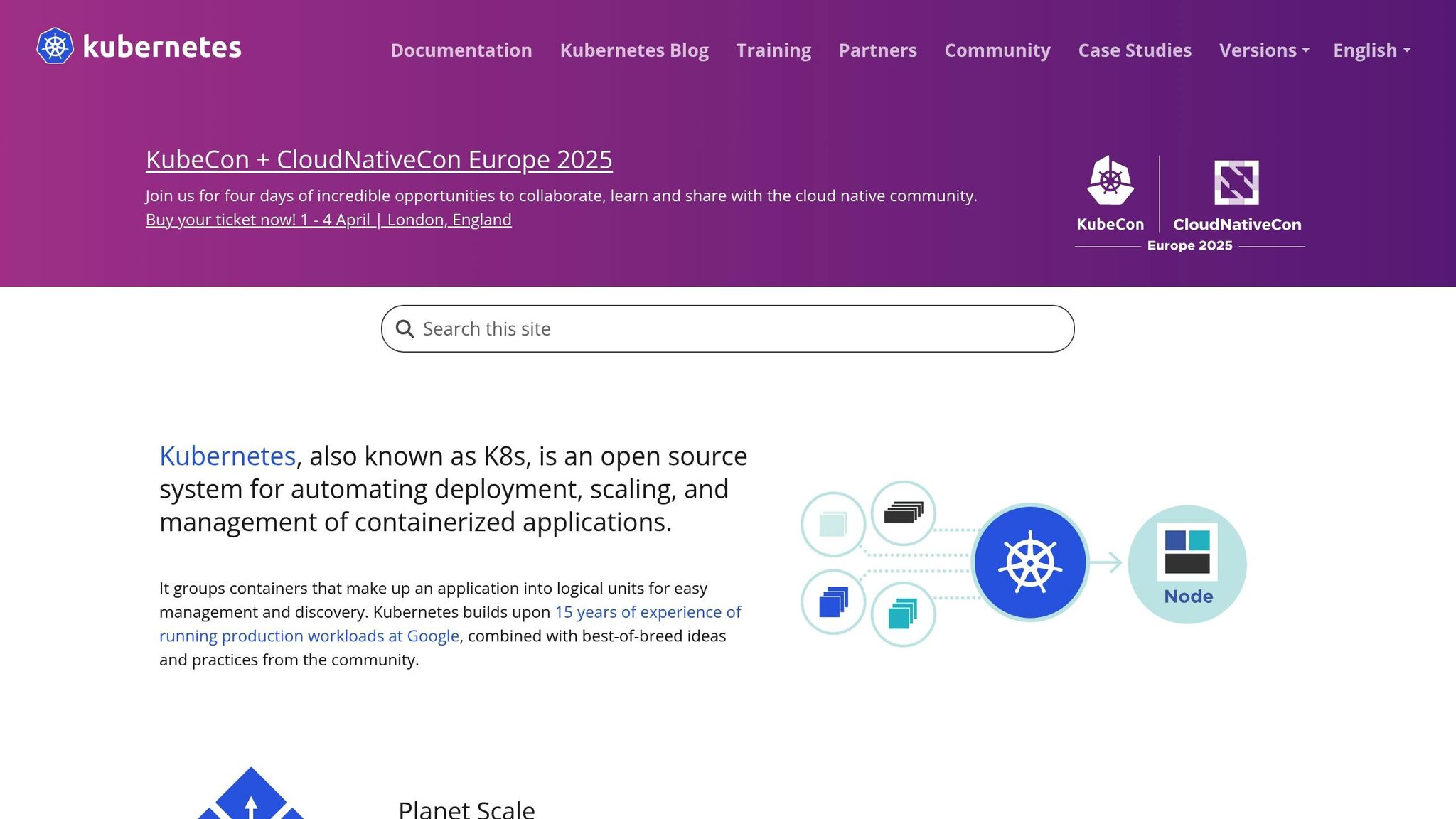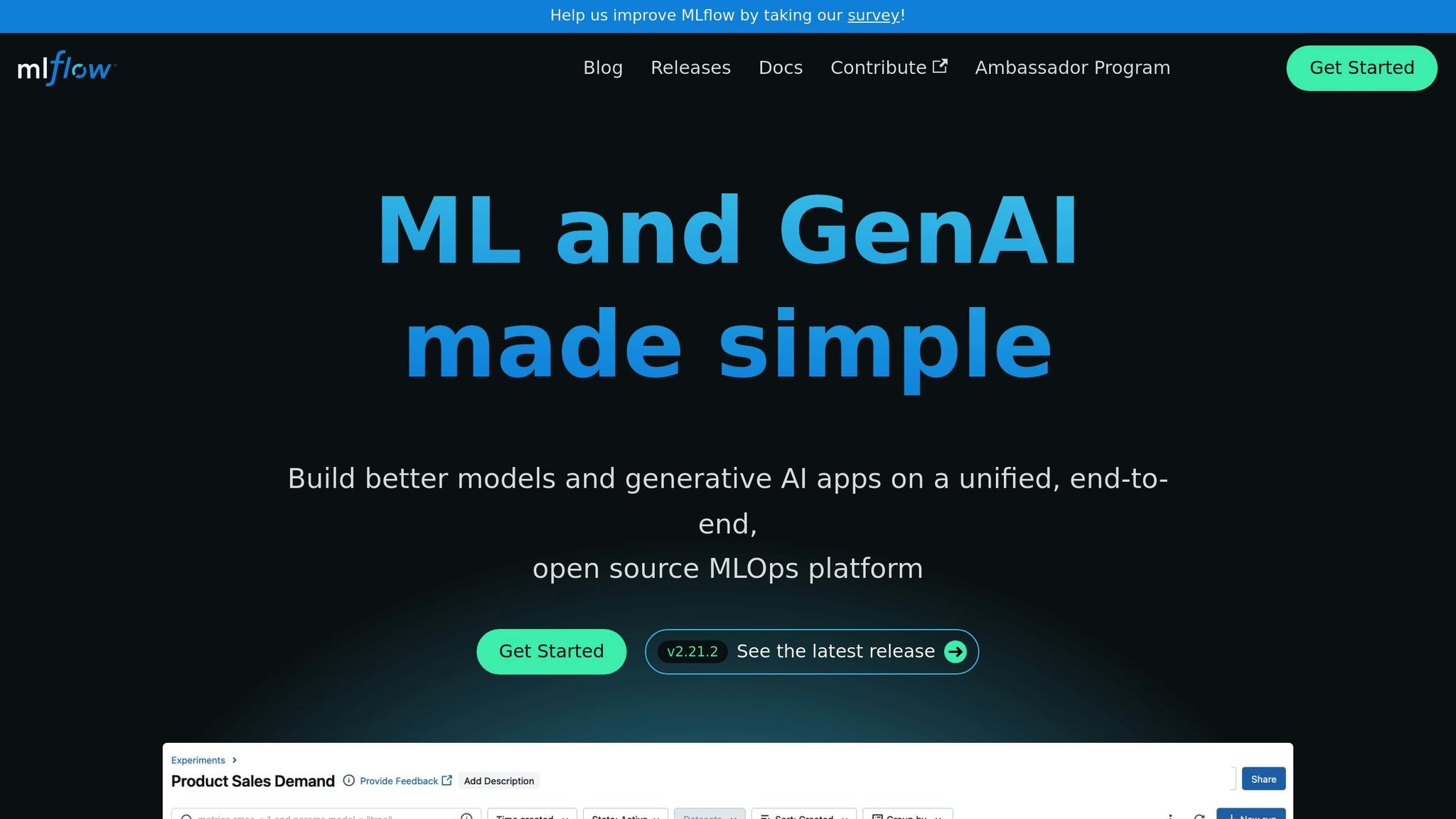
AI orchestration simplifies complex workflows by managing models, data, and resources in real-time. Open-source tools are popular for their flexibility, cost savings, and transparency. Here's a quick look at what you'll learn:
Why Open-Source? Avoid vendor lock-in, reduce costs, and access community-driven updates.
Key Features: Data management, task scheduling, and strong security (e.g., encryption, compliance).
Top Tools: Apache Airflow (workflow management), Kubernetes (scaling AI workloads), and MLflow (managing ML lifecycles).
Implementation Tips: Analyze needs, choose compatible tools, optimize performance, and train your team.
Open-source tools like Apache Airflow, Kubernetes, and MLflow help businesses streamline operations, scale AI systems, and ensure security. Learn how to choose the right tool, set it up, and maintain it for long-term success.
AI orchestration relies on strong data management practices to handle both structured and unstructured data while ensuring traceability and version control. This includes pipelines for real-time streaming, batch processing, and hybrid workflows - critical for meeting operational demands in real-time scenarios.
Data catalogs play a key role by organizing metadata and making it searchable across various data formats and storage systems, from traditional databases to cloud-based platforms. Version control for both data and models ensures reproducibility and tracks changes effectively.
Key capabilities include:
Automated data validation
Pipeline monitoring
Data lineage tracking
Integration with existing systems
Efficient task coordination is just as important as data management. Orchestration platforms must handle scheduling for time-based and event-driven triggers, manage compute resources, and monitor execution while addressing failures.
Key features include:
Dynamic workload adjustment
Dependency management
Error handling with retry mechanisms
Efficient use of resources
These systems should also provide a clear overview of task status and performance metrics, helping users fine-tune workflows.
Strong security measures are the backbone of reliable AI orchestration. To meet industry standards and regulatory requirements, systems must implement robust protection mechanisms. Core security features include:
Access Control
Role-based access control (RBAC)
Multi-factor authentication
Detailed audit logs
Session management
Data Encryption
Compliance Features
Automated compliance reporting
Data retention policies
Privacy controls
Comprehensive audit trails
Regular audits and updates ensure the system stays secure and meets evolving security needs.

These open-source tools are excellent options for managing and orchestrating AI workflows.

Apache Airflow is a Python-based tool designed to manage AI/ML workflows. It allows you to define workflows as code, making it easier to collaborate and track changes.
Key features include:
Dynamic Pipeline Creation: Build workflows that adjust based on runtime conditions or external triggers.
Extensive Operator Library: Includes pre-built integrations with major cloud platforms and data tools.
Real-Time Monitoring: Track task execution and resource usage as they happen.
REST API Support: Automate and control workflows programmatically.
Airflow uses a directed acyclic graph (DAG) structure to manage task dependencies. This approach ensures workflows run smoothly without circular dependencies causing deadlocks.
Next, let’s look at a tool designed for scaling containerized AI workloads.

Kubernetes is a powerful platform for managing containerized applications, making it a go-to choice for scaling AI workloads.
Key features include:
Automatic Scaling: Adjust resources based on workload needs.
GPU Allocation: Efficiently manage GPU resources for AI tasks.
Resource Management: Set precise limits on compute and memory usage.
Service Discovery: Automatically balances and routes traffic for distributed AI services.
Kubernetes is particularly effective for handling distributed training jobs and running multiple AI models at the same time, making it a strong choice for organizations with complex AI needs.
Now, let’s explore a tool tailored for managing the entire machine learning process.

MLflow is designed to manage the full machine learning lifecycle, from experiments to deployment.
Its four main components are:
| Component | Purpose | Key Features |
|---|---|---|
| Tracking | Logs experiments | Automatically records metrics and parameters. |
| Models | Packages models | Standard formats for easy deployment. |
| Projects | Organizes code | Ensures reproducibility with clear dependencies. |
| Registry | Manages versions | Centralized storage and lifecycle tracking. |
MLflow integrates seamlessly with other tools and supports multiple ML frameworks, making it a flexible option for diverse AI stacks.
Careful planning is key when deploying open-source AI orchestration tools in any organization.
Before choosing an AI orchestration tool, start by evaluating your organization's needs. Pay attention to these important areas:
| Requirement Category | Key Considerations | Impact Factors |
|---|---|---|
| Technical Infrastructure | Computing resources, storage capacity, network bandwidth | Affects performance and scalability |
| Data Requirements | Volume, speed, and variety of data | Influences tool configuration and selection |
| Integration Needs | Compatibility with existing systems, APIs, and protocols | Shapes implementation strategy |
| Security Standards | Compliance and data protection requirements | Determines security protocols and configurations |
Assess both current needs and potential future growth. If you're setting up AI-driven web applications, ensure your infrastructure can handle real-time operations.
Once you have a clear understanding of your requirements, move forward with selecting the tool that aligns with these needs.
When picking an open-source AI orchestration tool, focus on these key factors:
Technical Compatibility
Ensure the tool works seamlessly with your tech stack, including language support, APIs, and integration capabilities.
Scalability Needs
Evaluate how the tool handles scaling, such as resource scaling, load balancing, and workload distribution during peak times.
Team Expertise
Consider your team's technical skills and the learning curve for each tool. Look into training options and the availability of detailed documentation.
Once you've selected the right tool, focus on a smooth setup and consistent maintenance to keep things running efficiently.
Initial Configuration
Set up environments
Configure data pipelines
Deploy monitoring tools
Establish security measures
Performance Optimization
Improve response times
Adjust resource allocation
Use caching strategies
Set automated scaling rules
Ongoing Maintenance
Regularly update the system
Monitor performance continuously
Apply security patches promptly
Implement backup procedures
Define clear KPIs to track success. Monitor metrics like response times, system throughput, resource usage, error rates, and model accuracy. A strong monitoring system with alerts is essential for quickly identifying and resolving any issues.
Managing AI orchestration effectively requires a team with the right skills. Addressing skill gaps through focused training can make a big difference.
Having a skilled team is essential for handling open-source AI orchestration. Training plays a crucial role in tackling challenges like integration, resource management, and operations.
| Training Area | Key Focus | Suggested Timeline |
|---|---|---|
| Technical Skills | Tool operations, troubleshooting | 4–6 weeks of initial training; ongoing updates |
| Best Practices | Security measures, optimization techniques | 2–3 weeks upfront, with quarterly refreshers |
| Documentation | System architecture, standard procedures | 1–2 weeks to start, with monthly reviews |
| Collaboration | Cross-team communication, knowledge sharing | Ongoing process |
Create a knowledge base that includes:
Step-by-step guides for routine tasks
Troubleshooting instructions
Standard configuration templates
Documentation of best practices
Regular evaluations and monthly reviews will help ensure the team stays efficient and ready to handle challenges.
Open-source AI orchestration plays a key role in managing scalable AI operations effectively. To implement it successfully, you need a strong technical setup, clear processes, and a well-trained team.
Here are the main factors for success:
Data Management: Use secure systems capable of handling both structured and unstructured data efficiently.
Resource Allocation: Distribute computing resources wisely across AI tasks to avoid bottlenecks.
Team Expertise: Prioritize continuous training to keep technical skills sharp.
Integration Practices: Stick to established protocols to ensure smooth system integration.
These components create a solid framework for an AI orchestration system that promotes growth while staying secure and efficient. Regular assessments and skill development are key to maintaining a reliable AI infrastructure that keeps up with technological and business changes.


